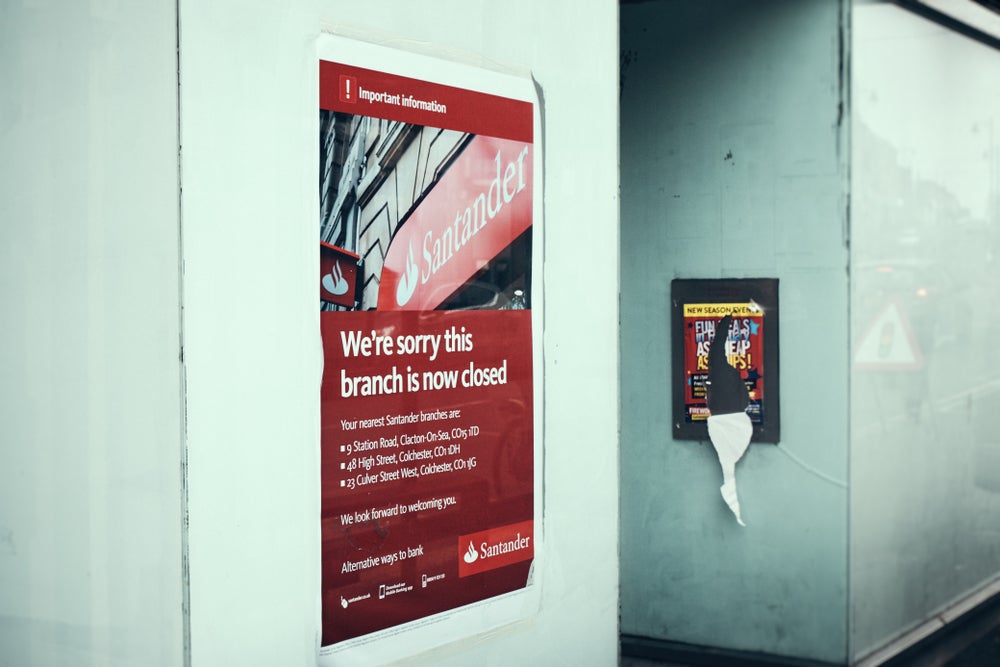One of the major US-based supermarket bankers has
announced plans to close a host of in-store branches, blaming the
effects of the Durbin amendment. But other prominent in-store
banking players have stressed the importance of in-store branches
to retail strategies and vowed to stay the course. Charles Davis
reports.
 International Banchares Corp, based in Laredo, Texas, will
International Banchares Corp, based in Laredo, Texas, will
close 55 grocery store branches, and has placed the blame for axing
the stores on the Durbin amendment.
IBC chairman and CEO Dennis Nixon
describes the closings as “an unfortunate result of recently passed
banking regulations that limit how much banks can charge stores for
debit card transactions”.
Nixon adds: “The recently passed
banking regulations have resulted in numerous changes in the
financial industry from the elimination of rewards programmes to
the elimination of free checking.
“Our customers have always made it
clear to us that free products and services are extremely important
to them. To keep those free offerings in place, we will have to
reduce expenses. This means we will close 55 of our smaller
in-store branches located in grocery stores.”
How well do you really know your competitors?
Access the most comprehensive Company Profiles on the market, powered by GlobalData. Save hours of research. Gain competitive edge.

Thank you!
Your download email will arrive shortly
Not ready to buy yet? Download a free sample
We are confident about the unique quality of our Company Profiles. However, we want you to make the most beneficial decision for your business, so we offer a free sample that you can download by submitting the below form
By GlobalDataNixon says the company expects to
eliminate about 500 jobs as a result of the branch closings.
Other US banks with significant
supermarket branch footprints downplayed the effect of the
regulations on their operations, describing them as integral to
retail strategy.
TCF Financial, which operates 233
in-store branches, is deeply committed to the strategy, says bank
spokesman Jason Korstange.
“Supermarket banking continues to
grow, and we like the business,” Korstange says.
“We have decreased our number of
branches a bit because our partner, SuperValue, has closed a few
stores, but then we have added a few as they open new stores, so we
have stayed even overall.”
Korstange says TCF’s experience has
been that, if the bank has a bricks-and-mortar branch close to an
in-store branch, both perform better.
“We have found they work in
tandem,” he says. “We see them as a complementary strategy, and
while we are readjusting to the landscape post-reform, we have a
deep commitment to the in-store strategy.”
Spokesmen for Wells Fargo, the
largest in-store deposit gatherer in the country, and US Bank, top
in terms of number of in-store branches with 730 locations,
affirmed their commitment to grocery store banking.
Some grocery store bankers are even
expanding. Citizens Financial Group, which holds the second largest
amount of deposits at its in-store branches, last year opened a
branch within a Dunkin’ Donuts franchise in Massachusetts.
About 250 square feet – half the
size of a supermarket branch – it seeks to capitalise on the coffee
craze sweeping the country.
Bank of America, meanwhile, plans
to close about 750 branches nationwide, and there is little doubt
that some of that total will include in-store branches, although it
is hard to say whether or not the interchange fee cap is the
culprit or merely a variable among many.
John Costa, managing director for
financial strategies at the Auriemma Consulting Group, says it is
impossible to point entirely to the Durbin amendment for any branch
closures, but notes that it is a major factor in bank
decision-making these days.
“Banks are in the middle of a
fundamental repricing, and that has everything to do with Durbin,”
he says.
“Fees alone can’t close the gap for
some banks, and so branches go a lot further a lot faster when you
are trying to affect the bottom line.”
Not everyone is shying away from
in-store branches. US Bancorp said at its investor day in New York
it wants to expand its network of 806 in-store branches.
In Ohio, Huntington Bank has begun
a significant foray into in-store branching as part of a larger
initiative aimed at revamping its 608-branch network with new
digital signage and a fresh look inside and out.
Through a 15-year agreement with
Pittsburgh-based grocery chain Giant Eagle, Huntington will open 27
small, in-store branches in the supermarkets by the end of 2011,
and eventually will install branches in 103 supermarkets.
Additionally, Huntington will
install branches in any newly constructed Giant Eagle supermarkets.
It will also replace all existing bank branches in approximately 75
Giant Eagle supermarkets upon the expiration of existing bank
branch agreements.
Cindy Keitch, a senior
vice-president at Huntington and director of the bank’s in-store
locations, says the bank now has 32 in-store locations, a little
more than a year since beginning the grocery store banking
effort.
“This is about convenience,
ultimately, but it is also a sales opportunity for us,” she
says.
“It is a question of how we acquire
new households in an incredibly competitive retail banking market,
and we really like the fact that our lobby is the whole Giant Eagle
store, and unlike our traditional branches, a lot of the people
walking around them are not our customers.”
Keitch says that Huntington deeply
invests itself in the Giant Eagle culture, and walks the aisles
talking with customers.
“We know where the spice aisle is,
we know what the daily specials are, we even play along in in-store
promotions,” she says.
Keitch says that Huntington is a contrarian when it comes to
Durbin and new fees. Indeed, its ‘Asterisk-Free’ current account
product, launched in May, is free to open, has no maintenance fees
or minimum balance and the bank has no plans to assess debit card
fees or usage requirements.







